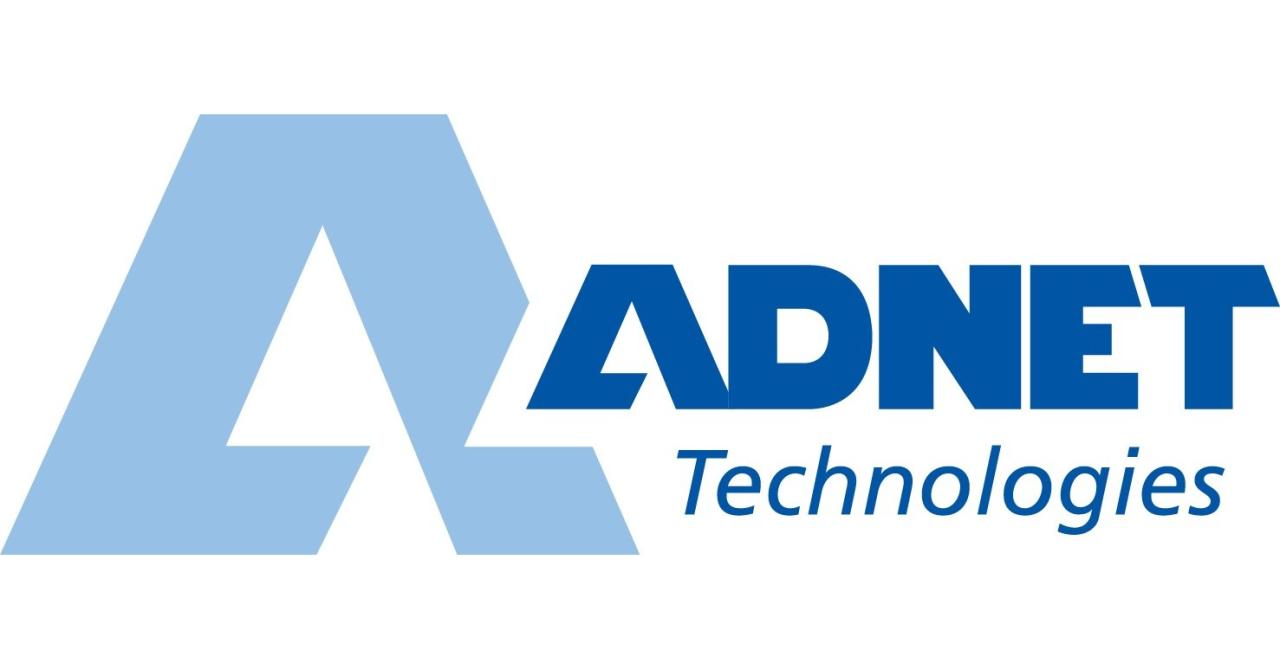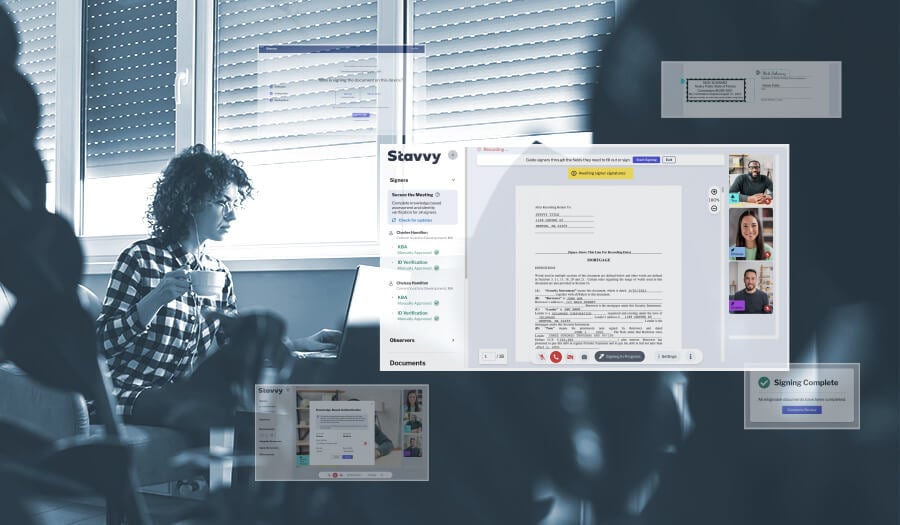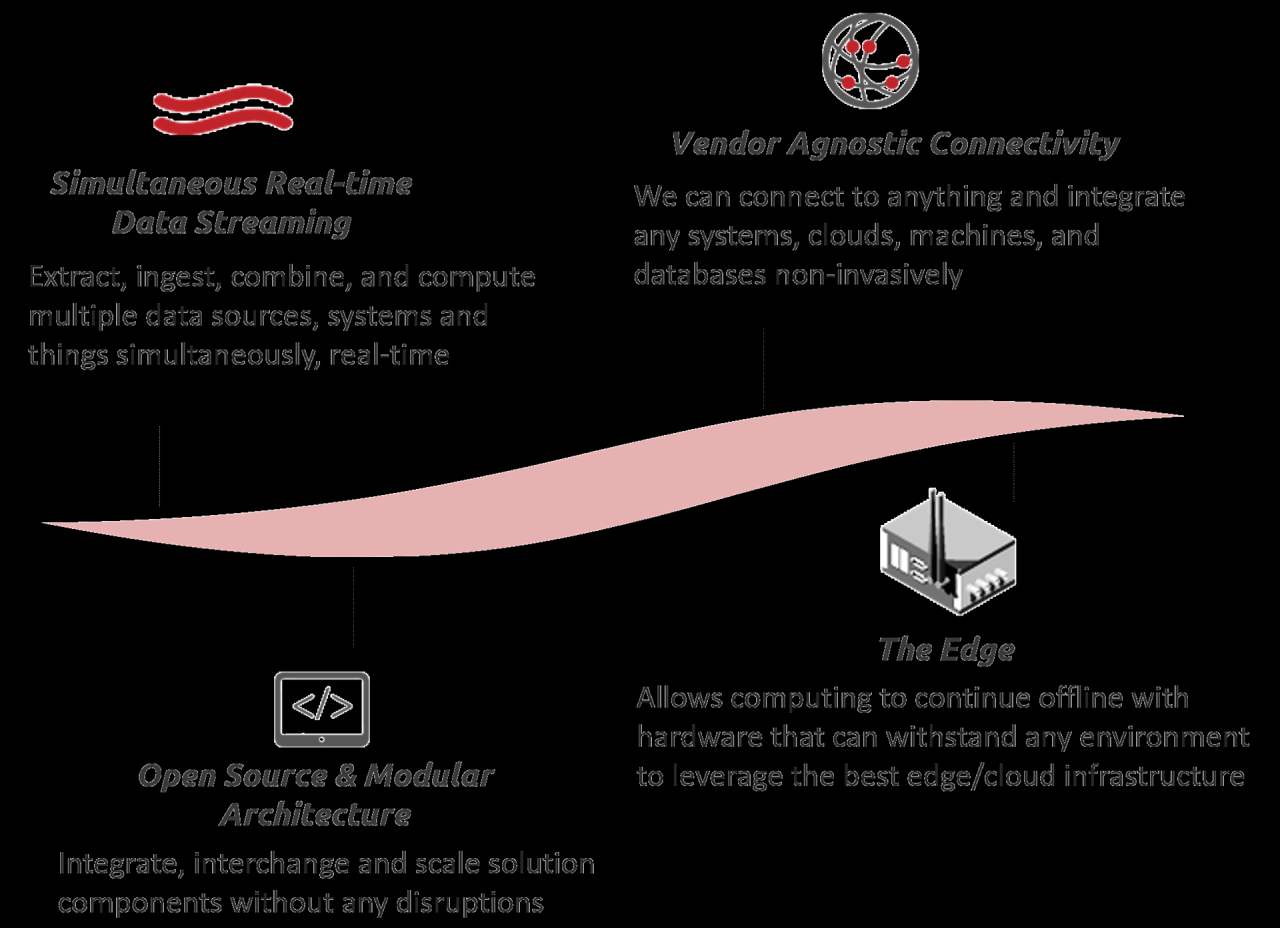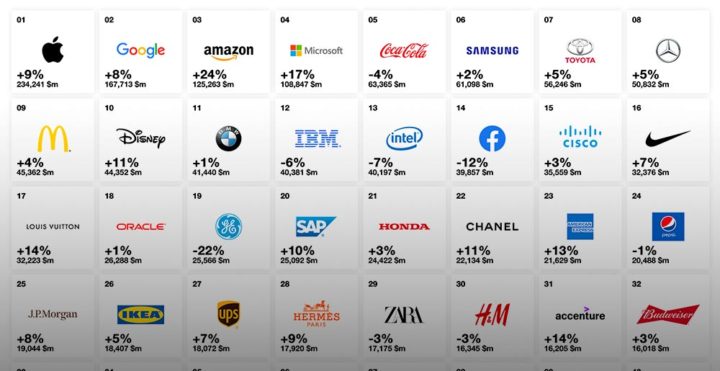Ad Technologies: Shaping the Future of Advertising
Ad technologies have revolutionized the way we interact with advertising, transforming a once static landscape into a dynamic and data-driven ecosystem. From the early days of banner ads to the […]
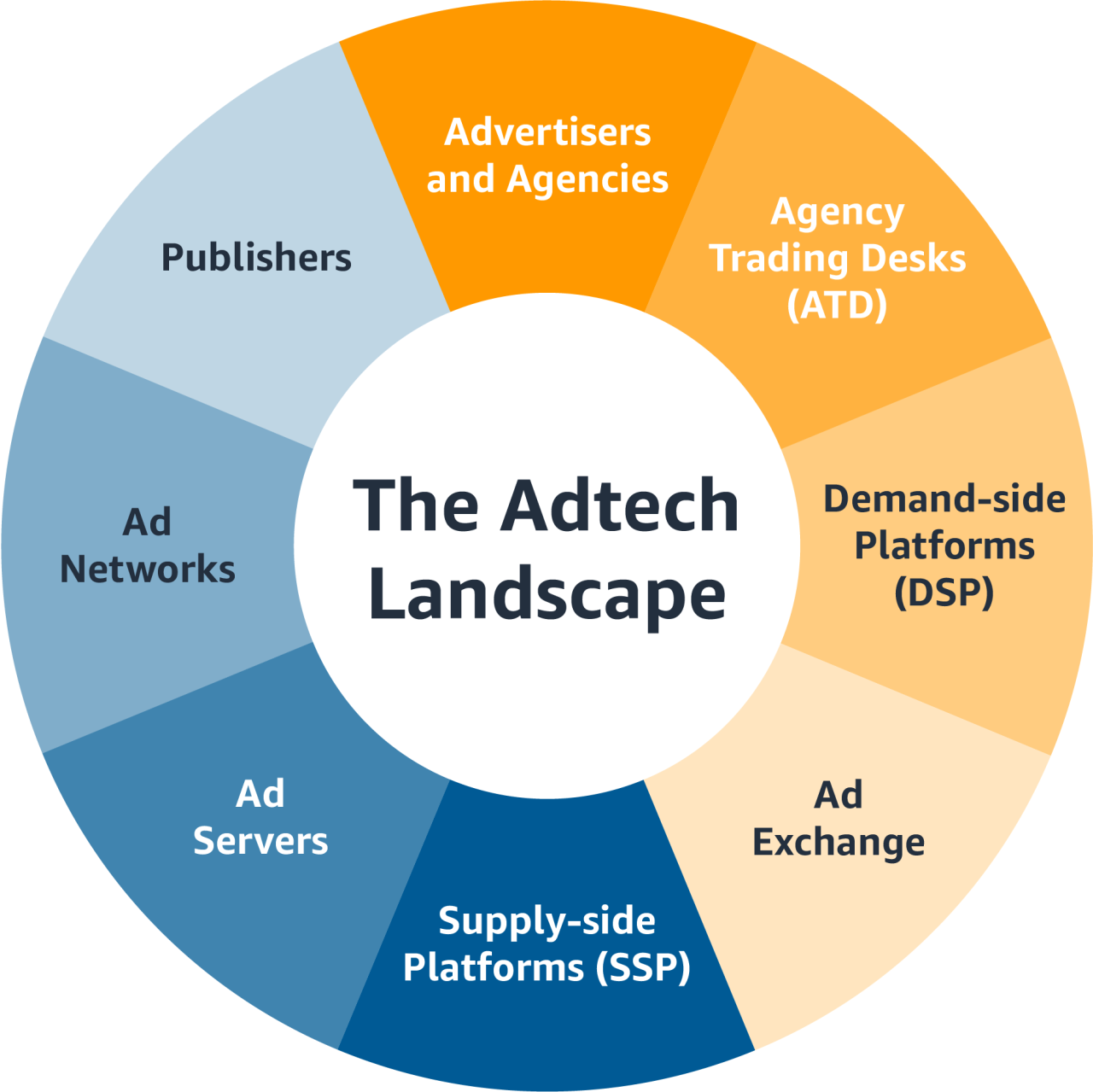
Ad technologies have revolutionized the way we interact with advertising, transforming a once static landscape into a dynamic and data-driven ecosystem. From the early days of banner ads to the sophisticated targeting capabilities of today, ad technologies have continuously evolved, adapting to new platforms, consumer behaviors, and technological advancements.
This evolution has been driven by a confluence of factors, including the rise of the internet, the proliferation of mobile devices, and the development of artificial intelligence and data analytics. These technologies have empowered advertisers to reach their target audiences with unprecedented precision and effectiveness, while also creating new opportunities for publishers to monetize their content.
Evolution of Ad Technologies

The world of advertising has undergone a dramatic transformation, evolving from traditional print and broadcast mediums to the sophisticated digital landscape we see today. This evolution has been driven by technological advancements, changing consumer behaviors, and the relentless pursuit of effective marketing strategies.
Traditional Advertising, Ad technologies
Traditional advertising encompasses print and broadcast media, including newspapers, magazines, television, and radio. These formats dominated the advertising landscape for decades, offering a relatively straightforward approach to reaching target audiences.
- Print Advertising: Print ads in newspapers and magazines relied on visual elements, text, and sometimes coupons to attract readers’ attention. These ads often featured eye-catching visuals, persuasive copy, and clear calls to action. They were particularly effective in reaching specific demographics based on publication readership.
- Broadcast Advertising: Television and radio commercials relied heavily on audio and visual storytelling to engage viewers and listeners. They often employed catchy jingles, memorable slogans, and celebrity endorsements to create brand recognition and drive product awareness. Broadcast ads could reach large audiences, but their effectiveness could be limited by factors like channel hopping and commercial breaks.
The Rise of Digital Advertising
The advent of the internet in the late 20th century marked a pivotal moment in advertising history. Digital platforms provided new avenues for reaching consumers and tracking the effectiveness of advertising campaigns.
- Banner Ads: Banner ads were among the earliest forms of digital advertising. They appeared on websites as rectangular or square images or text, often featuring eye-catching graphics and compelling messages. Banner ads allowed advertisers to target specific audiences based on website content and user demographics.
- Pop-up Ads: Pop-up ads emerged as a more intrusive form of digital advertising, often appearing in separate windows or overlays on web pages. While effective in grabbing attention, pop-up ads faced criticism for their disruptive nature and impact on user experience.
Search Engine Marketing
Search engine marketing (SEM) emerged as a powerful tool for reaching consumers actively searching for products or services online.
- Search Engine Optimization (): involves optimizing website content and structure to improve visibility in search engine results pages (SERPs). This approach focuses on organic search results, which are unpaid placements based on website relevance and quality.
- Pay-Per-Click (PPC): PPC advertising allows advertisers to bid on s related to their products or services. When a user searches for a relevant , the advertiser’s ad may appear as a sponsored result. PPC campaigns are paid for on a per-click basis, offering a measurable and targeted approach to advertising.
Social Media Advertising
The rise of social media platforms like Facebook, Instagram, and Twitter opened new doors for advertising. Social media advertising leverages the power of social networks to reach target audiences and engage with consumers on a personal level.
- Targeted Advertising: Social media platforms allow advertisers to target specific demographics, interests, and behaviors, ensuring that ads are seen by the most relevant audience. This level of targeting significantly improves the effectiveness of advertising campaigns.
- Social Media Influencer Marketing: Social media influencers have become a powerful force in advertising, leveraging their large followings to promote products and services. By partnering with influencers, brands can tap into their audience’s trust and engagement, creating authentic and relatable marketing campaigns.
Programmatic Advertising
Programmatic advertising represents a significant shift in the advertising landscape. It leverages automation and data to deliver targeted ads in real time.
- Real-Time Bidding (RTB): RTB is a key component of programmatic advertising. It allows advertisers to bid on ad impressions in real time, based on user data and contextual information. This dynamic bidding process ensures that ads are delivered to the most relevant audience at the most opportune moment.
- Data-Driven Targeting: Programmatic advertising relies heavily on data to inform targeting strategies. By analyzing user behavior, demographics, and browsing history, advertisers can deliver highly personalized ads that resonate with individual consumers.
Technological Advancements Shaping Ad Technologies
Technological advancements have played a crucial role in shaping the evolution of ad technologies.
- The Internet: The internet provided the foundation for digital advertising, connecting advertisers with consumers across the globe. It facilitated the development of new ad formats, targeting methods, and measurement tools.
- Mobile Devices: The proliferation of mobile devices has transformed the way consumers access information and interact with brands. Mobile advertising has become a significant channel, requiring advertisers to adapt their strategies to optimize for smaller screens and mobile-first experiences.
- Artificial Intelligence (AI): AI is revolutionizing ad technologies, enabling more sophisticated targeting, personalization, and automation. AI algorithms can analyze vast amounts of data to identify patterns and predict user behavior, allowing for more effective and efficient ad campaigns.
- Data Analytics: Data analytics plays a crucial role in modern advertising, providing insights into consumer behavior and campaign performance. By analyzing data from various sources, advertisers can measure the effectiveness of their campaigns, optimize their strategies, and maximize their return on investment.
Core Components of Ad Technologies
The intricate world of digital advertising relies on a complex ecosystem of interconnected technologies. These technologies work together to deliver targeted ads to the right audience, measure their effectiveness, and optimize ad campaigns for maximum return on investment. Understanding the core components of this ecosystem is crucial for anyone involved in digital marketing, from advertisers to publishers.
The ad technology stack comprises various components, each playing a crucial role in the advertising process. This includes ad servers, ad exchanges, demand-side platforms (DSPs), supply-side platforms (SSPs), data management platforms (DMPs), and ad networks.
Ad technologies are constantly evolving, seeking new ways to target consumers and optimize campaigns. While some focus on personalization and data analysis, others are turning their attention to sustainability and environmental responsibility. Enviro technologies offer solutions for reducing waste, minimizing energy consumption, and promoting eco-friendly practices, which can be integrated into ad campaigns to create a positive impact on the environment.
By embracing these advancements, ad technologies can contribute to a more sustainable future.
Ad Servers
Ad servers are the backbone of digital advertising. They are responsible for storing, managing, and delivering ads to websites and apps. Ad servers handle various tasks, including:
- Storing and managing ad creatives: Ad servers store various ad formats, including banner ads, video ads, and native ads, in different sizes and formats. They also manage the creative assets, ensuring they are optimized for different devices and platforms.
- Targeting and delivery: Ad servers use targeting parameters, such as demographics, interests, and browsing history, to deliver ads to the most relevant audience. They also ensure that ads are delivered in the correct format and size for the specific website or app.
- Tracking and reporting: Ad servers track the performance of ads, providing detailed reports on metrics like impressions, clicks, and conversions. This data helps advertisers understand the effectiveness of their campaigns and make necessary adjustments.
Ad Exchanges
Ad exchanges act as marketplaces where publishers and advertisers can buy and sell ad inventory in real-time. These platforms facilitate the efficient allocation of ad space, allowing publishers to monetize their inventory while advertisers can reach their target audience.
- Real-time bidding (RTB): Ad exchanges use RTB to auction ad space in real-time, allowing advertisers to bid on impressions based on various factors like user data, website context, and ad format. This allows for more targeted and efficient ad delivery.
- Inventory management: Ad exchanges manage a vast inventory of ad space from various publishers, providing advertisers with access to a diverse range of audience segments and website environments.
- Transparency and control: Ad exchanges offer transparency into the bidding process, allowing advertisers to understand the cost of ad space and the audience they are reaching. They also provide control over the targeting parameters and ad formats used in campaigns.
Demand-Side Platforms (DSPs)
DSPs are platforms that enable advertisers to manage and automate their ad buying processes across multiple ad exchanges and publishers. They provide a centralized interface for advertisers to manage their campaigns, target specific audiences, and optimize their ad spend.
- Campaign management: DSPs allow advertisers to create and manage multiple ad campaigns, setting budgets, targeting parameters, and monitoring performance metrics. They also provide tools for A/B testing and campaign optimization.
- Audience targeting: DSPs offer advanced targeting capabilities, allowing advertisers to reach specific audience segments based on demographics, interests, behavior, and other data points. They leverage data from various sources, including first-party data, third-party data, and audience segments.
- Real-time bidding (RTB): DSPs automate the bidding process in ad exchanges, using algorithms to determine the optimal bids for each impression based on the campaign objectives and targeting parameters. They also analyze data in real-time to optimize bids and improve campaign performance.
Supply-Side Platforms (SSPs)
SSPs are platforms that help publishers manage and monetize their ad inventory. They provide publishers with tools to connect to multiple ad exchanges, optimize their ad revenue, and control the types of ads displayed on their websites and apps.
- Inventory management: SSPs aggregate ad inventory from various publishers, allowing them to sell their ad space to a wider range of advertisers. They also provide tools for managing inventory, setting pricing, and controlling ad formats.
- Ad optimization: SSPs use algorithms to optimize ad revenue by selecting the best-paying advertisers for each impression. They also provide tools for A/B testing and analyzing ad performance to maximize revenue.
- Ad quality control: SSPs help publishers maintain ad quality by filtering out low-quality advertisers and ensuring that only relevant and engaging ads are displayed on their websites and apps.
Data Management Platforms (DMPs)
DMPs are platforms that collect, organize, and activate data about users, enabling advertisers and publishers to gain deeper insights into their audience and personalize their advertising campaigns. They provide a centralized hub for managing various data sources, including first-party data, third-party data, and audience segments.
- Data collection and aggregation: DMPs collect data from various sources, including website analytics, CRM systems, and third-party data providers. They organize and cleanse this data to create a comprehensive view of user behavior and preferences.
- Data segmentation and targeting: DMPs allow advertisers and publishers to segment their audience based on various criteria, such as demographics, interests, and behavior. They can then use this data to target specific audience segments with personalized advertising campaigns.
- Data activation: DMPs enable advertisers and publishers to activate their data across various advertising platforms, including DSPs, ad exchanges, and social media networks. This allows them to leverage their data insights to improve campaign targeting and performance.
Ad Networks
Ad networks are intermediaries that connect advertisers to publishers, providing a streamlined way for advertisers to reach a wide audience and for publishers to monetize their inventory. They act as aggregators, pooling ad inventory from various publishers and matching it with advertisers seeking to reach specific audience segments.
- Inventory aggregation: Ad networks aggregate ad inventory from various publishers, creating a large pool of ad space that advertisers can access. This allows advertisers to reach a broader audience without having to negotiate with individual publishers.
- Ad targeting: Ad networks offer various targeting options, allowing advertisers to reach specific audience segments based on demographics, interests, and behavior. They also provide tools for campaign management and performance tracking.
- Revenue optimization: Ad networks help publishers optimize their ad revenue by filling their ad inventory with relevant and high-paying advertisers. They also provide tools for managing ad placements and controlling ad formats.
Targeting and Personalization in Ad Technologies
In the realm of digital advertising, the ability to deliver the right message to the right audience at the right time is paramount. This is where targeting and personalization come into play, allowing advertisers to tailor their campaigns to specific user segments based on a variety of factors.
Targeting Methods
Targeting methods in ad technologies aim to identify and reach specific user groups, enhancing the effectiveness of advertising campaigns. This involves utilizing various data points and algorithms to segment audiences and deliver personalized experiences.
- Demographic Targeting: This method leverages readily available information about users, such as age, gender, location, income, and education level, to categorize them into specific groups. Advertisers can then target these groups with ads that are relevant to their demographics. For example, an advertiser selling cosmetics might target women aged 25-45 in urban areas.
- Behavioral Targeting: This method focuses on user actions and online behavior, analyzing their browsing history, website visits, search queries, and purchase history. By tracking these patterns, advertisers can tailor ads to users’ interests and preferences. For instance, an advertiser selling sports equipment might target users who frequently visit sports websites or search for sports-related products.
- Contextual Targeting: This method focuses on the content of the website or app where the ad is displayed. Advertisers can target users based on the topic of the content they are consuming. For example, an advertiser selling travel packages might target users who are reading articles about travel destinations.
- Retargeting: This method involves displaying ads to users who have previously interacted with a brand or product. For instance, if a user visits an e-commerce website and adds an item to their cart but doesn’t complete the purchase, they might be retargeted with ads reminding them about the abandoned item.
Ethical Implications of Personalized Advertising
While personalized advertising offers numerous benefits, it also raises ethical concerns, particularly regarding data privacy, algorithmic bias, and potential manipulation.
- Data Privacy Concerns: Personalized advertising relies heavily on collecting and analyzing user data, which can raise concerns about privacy and data security. Users may be apprehensive about the extent to which their online activities are being tracked and used to target them with ads.
- Algorithmic Bias: The algorithms used for personalized advertising can perpetuate existing biases based on factors like race, gender, or socioeconomic status. This can lead to discriminatory practices, where certain groups are unfairly excluded from opportunities or targeted with harmful or inappropriate ads.
- Potential for Manipulation: Personalized advertising can be used to manipulate users’ behavior and influence their decisions. By exploiting users’ vulnerabilities and preferences, advertisers can create a sense of urgency or scarcity, leading them to make impulsive purchases or engage in harmful behaviors.
Examples of Successful Ad Campaigns
Several successful ad campaigns have leveraged advanced targeting strategies to achieve specific marketing objectives.
- Netflix uses a combination of demographic, behavioral, and contextual targeting to recommend movies and TV shows to its users. By analyzing their viewing history, preferences, and the content they are watching, Netflix can personalize their recommendations, leading to higher engagement and satisfaction.
- Amazon utilizes retargeting to remind users about items they have added to their cart or viewed on the website. These personalized ads help increase conversion rates and drive sales.
- Nike employs contextual targeting to reach users who are interested in fitness and sports. By displaying ads on relevant websites and apps, Nike can connect with a highly engaged audience and promote its products effectively.
Measurement and Optimization in Ad Technologies
In the realm of digital advertising, understanding campaign effectiveness is paramount. Ad technologies provide a sophisticated suite of tools for measuring and optimizing campaign performance, allowing advertisers to maximize their return on investment (ROI).
Key Metrics for Measuring Ad Campaign Effectiveness
Understanding key metrics is crucial for evaluating ad campaign performance. These metrics provide insights into user engagement, campaign reach, and overall effectiveness.
- Click-Through Rate (CTR): This metric measures the percentage of users who click on an ad after viewing it. A higher CTR indicates that the ad is attracting user attention and driving engagement. For example, a CTR of 2% means that 2 out of every 100 users who see the ad click on it.
- Conversion Rate: This metric measures the percentage of users who complete a desired action after clicking on an ad, such as making a purchase or signing up for a newsletter. A higher conversion rate signifies that the ad is effectively driving users to take the desired action. For instance, a conversion rate of 10% implies that 10 out of every 100 users who click on the ad complete the desired action.
- Cost Per Click (CPC): This metric represents the average cost an advertiser pays for each click on their ad. A lower CPC indicates that the advertiser is spending less to acquire each click. For example, a CPC of $0.50 means that the advertiser pays $0.50 for every click on their ad.
- Return on Investment (ROI): This metric measures the profitability of an ad campaign. It is calculated by dividing the net profit from the campaign by the total cost of the campaign. A higher ROI indicates a more profitable campaign. For instance, an ROI of 200% means that the advertiser earns $2 for every $1 invested in the campaign.
Real-Time Monitoring and Optimization
Ad technologies empower real-time monitoring and optimization of campaign performance, enabling advertisers to make data-driven decisions and improve campaign effectiveness.
- Real-time Bidding (RTB): RTB allows advertisers to bid on ad impressions in real-time, based on factors like user demographics, browsing history, and device type. This dynamic bidding process helps optimize ad delivery and ensure that ads are shown to the most relevant audience.
- A/B Testing: A/B testing involves creating two versions of an ad and showing them to different user groups. By comparing the performance of the two versions, advertisers can identify which version is more effective and optimize their ad creative. For instance, advertisers can test different ad headlines, images, or calls to action to determine which elements resonate best with their target audience.
- Campaign Analytics Dashboards: Ad technologies provide comprehensive analytics dashboards that offer real-time insights into campaign performance. These dashboards track key metrics, identify trends, and provide actionable data for optimization. For example, advertisers can use these dashboards to monitor CTR, conversion rate, and ROI over time and adjust their campaigns accordingly.
Optimization Strategies
Advertisers can implement various optimization strategies based on specific campaign goals and metrics.
| Campaign Goal | Key Metrics | Optimization Strategies |
|---|---|---|
| Increase Brand Awareness | Reach, Frequency, Impressions | Expand targeting parameters, utilize display advertising, implement retargeting campaigns |
| Drive Website Traffic | CTR, Clicks, Landing Page Performance | Optimize ad copy and visuals, improve landing page experience, leverage search engine marketing |
| Generate Leads | Conversion Rate, Lead Form Submissions | Target high-intent users, create compelling calls to action, use lead capture forms |
| Increase Sales | Conversion Rate, Revenue, ROI | Optimize product recommendations, offer discounts and promotions, personalize shopping experiences |
The Future of Ad Technologies
The advertising landscape is constantly evolving, driven by technological advancements and changing consumer behavior. Ad technologies are at the forefront of this evolution, shaping how brands connect with their target audiences. As we move forward, several emerging trends and technologies are poised to revolutionize the advertising industry.
Programmatic Advertising, Influencer Marketing, and Subscription Models
Programmatic advertising, a technology-driven approach to buying and selling ad space, is rapidly gaining traction. It allows advertisers to automate ad buying, target specific audiences, and optimize campaigns in real-time. This approach offers greater efficiency and control over ad spend, enabling brands to reach the right consumers at the right time.
Influencer marketing has become a powerful force in advertising. Influencers, individuals with a large and engaged following, have the ability to sway consumer opinions and drive sales. Brands are increasingly partnering with influencers to promote their products and services, leveraging their authenticity and reach to connect with their target audiences.
The rise of ad-free subscription models is another significant trend. Consumers are increasingly willing to pay for premium content and experiences, free from intrusive advertising. This trend presents both challenges and opportunities for advertisers. While it may reduce traditional ad revenue streams, it also opens up new avenues for reaching consumers through targeted content and exclusive offers.
Last Recap
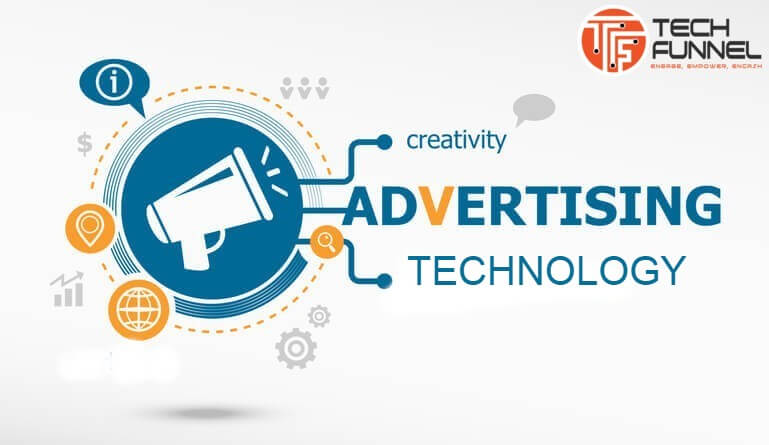
The future of ad technologies promises even more exciting developments, with emerging trends like programmatic advertising, influencer marketing, and the rise of ad-free subscription models shaping the landscape. As technology continues to advance, we can expect to see even more sophisticated targeting strategies, personalized experiences, and innovative ad formats that cater to the evolving needs of both advertisers and consumers.
